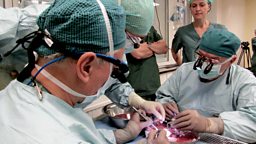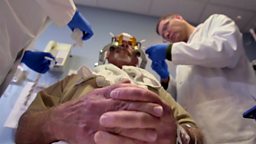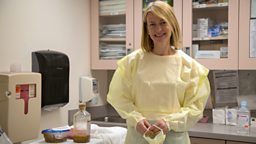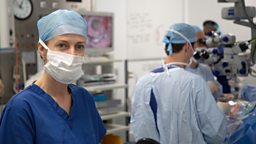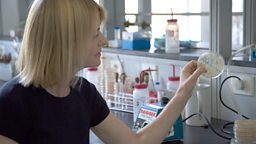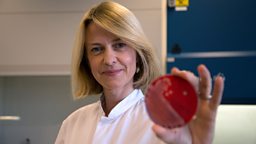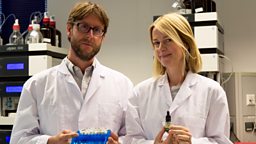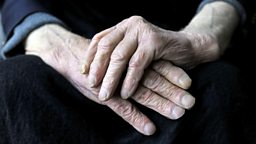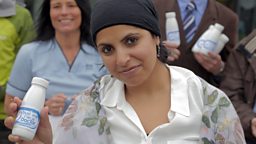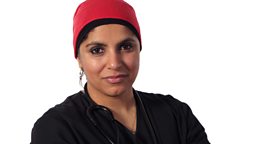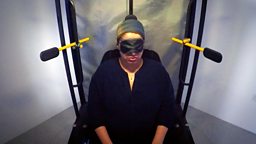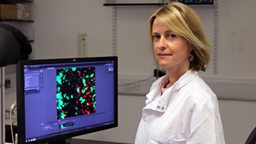Could enzymes called endolysins ease eczema symptoms and聽offer an alternative to antibiotics?
Here in the UK, 1 in 5 children and 1 in 12 adults suffer from atopic eczema, a painful and debilitating condition that causes dry, red and itchy skin.

It typically affects the hands, the backs of the knees and the inner elbows and although we’re still unsure what causes it in the first place, we know of several different triggers that can aggravate the condition, such as soaps, food allergies and stress.
There is currently no cure for eczema, and for many sufferers, the most reliable way of controlling the symptoms is to use powerful corticosteroid creams, but these can cause side effects and ideally should only be used in short bursts.
However, a new approach now being trialled in the Netherlands has the potential to help alleviate eczema symptoms without side effects by targeting particular bacteria that live on the skin.
Not only that, but this treatment has the potential to be a powerful new weapon in the wider battle against bacteria that are resistant to antibiotics.
Eczema and skin bacteria
Dermatologists have long been aware that people with eczema tend to have high levels of a particular bacterium on their skin – Staphylococcus aureus.
Skin swabs taken from eczema patients have shown that when Staphylococcus aureus dominates, the balance of the skin microbiome is compromised, leaving them with less of the ‘good’, protective bacteria which normally help to keep skin healthy.
What’s more, we now believe that Staphylococcus aureus also releases toxins onto the skin, which can aggravate the redness and the itch seen in eczema.
So far, it hasn’t been possible to target Staphyloccocus aureus bacteria without also damaging what remains of the skin’s ‘good bacteria’. But now, researchers have harnessed a tool from nature, that kills only this bacterium, leaving the beneficial bacteria intact.
Endolysins
Endolysins are enzymes that play an important role in the reproduction process of viruses called phages, which are the natural enemies of bacteria.
Phages kill bacteria by latching onto their cell walls and injecting their DNA inside so that new phages can be produced inside the cell.
Next, the bacterial cell wall needs to be opened to let the new phages out, and this is accomplished by an enzyme called an endolysin, which breaks open the bacterial cell wall, killing the bacteria in the process.
Researchers at Micreos, a Netherlands based antibacterial technology company, have harnessed the power of these enzymes to create the first endolysin registered for human use against bacterial infections (Staphefekt).
This endolysin is called Staphefekt and it only targets Staphylococcus aureus bacteria and is now being tested in a clinical trial in the Netherlands.
The Erasmus Medical Centre clinical trial
Gabriel Weston visited the Erasmus Medical Centre in Rotterdam, where Prof. Suzanne Pasmans and Dr. Joan Totte are working on a clinical trial to find out how this new treatment can help eczema sufferers. The trial will involve 100 patients, half of whom will be given the endolysin treatment and half of whom will be given a placebo. Neither the patients nor the researchers on the trial will know who has been given which treatment.
Every patient will have their skin swabbed at various stages of the trial so that the researchers can measure the levels of Staphylococcus aureus on their skin. And as well as being given either the endolysin cream or a placebo, the patients will each be given a corticosteroid cream. These creams will be weighed so that the researchers can measure how much cream each patient has used.
What the research team want to know is whether the new treatment changes the levels of bacteria on the patients’ skin, whether it can alleviate eczema symptoms, and whether it can reduce the participants’ dependence on corticosteroids.
The results of the Erasmus trial won’t be published for many months, but because this cream doesn’t contain any substance that’s classified as a drug, it’s less tightly regulated and is already available outside the trial. To date, anecdotal evidence and individual case studies have reported some impressive improvements, though not all patients will benefit to the same degree – it depends on how important a role Staphylococcus aureus plays in a particular individual’s eczema.
The wider potential for endolysins
Ezcema is just one example of a condition that could benefit from endolysin treatment. Already, the technology has been used to help other skin complains like rosacea and acne, and it could also help with a host of other infections.
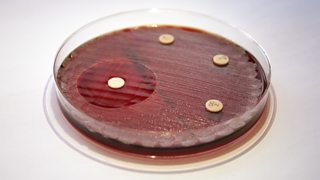
What’s even more exciting, however, is that for some conditions endolyins could offer a viable and lasting alternative to antibiotics. Researchers have found that bacteria cannot develop resistance to endolysins, and tests of Staphefekt have shown that it can even kill MRSA - Staphylococcus aureus bacteria that have developed resistance to the antibiotic methicillin. This means, that while antibiotics need to be used sparing against bacteria, endolysins can be used continuously without inducing resistance.
Another exciting possibility is that endolysins could be used as preventative tool – to kill bad bacteria like Staphylococcus aureus before they’re able to cause problematic infections. Dr Bjorn Herpers, medical advisor to Micreos, believes that this could lead to a paradigm shift in the way we approach certain infections.
